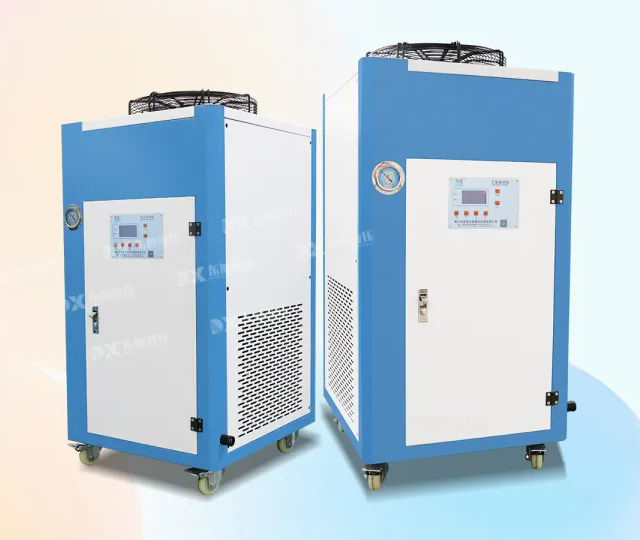01 Selection Method
Method 1:
Calculate the calorific value by the temperature difference between the inlet and outlet of the cooling oil:
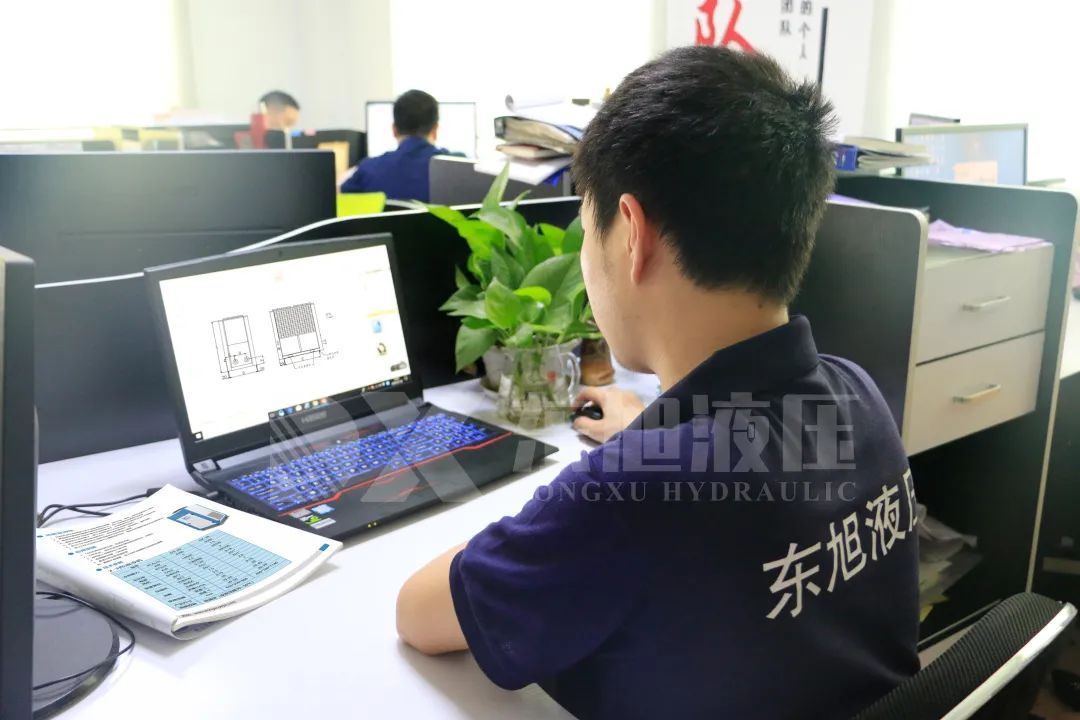
Q = SH × De × F × DT / 60
Q: Calorific value KW (note: the calorific value of 1P oil cooler is about 2.5KW)
SH: specific heat The specific heat of the oil is 1.97kJ/Kg*℃
De: specific gravity The specific gravity of oil is 0.88Kg/L
F: Flow LPM (L/min)
DT: the temperature difference between inlet and outlet of cooling oil (outlet temperature – inlet temperature)
Note: “/ 60″ is used to change the flow rate from liter/minute to liter/second; 1kW = 1kJ/s;
Q = 1.97× 0.88×15×(26-18) /60 (seconds) = 2.6KW
When choosing the cooling capacity of the oil cooler, it can be appropriately increased by 20%-50%
Method 2:
Estimated by the power and calorific value of the equipment:
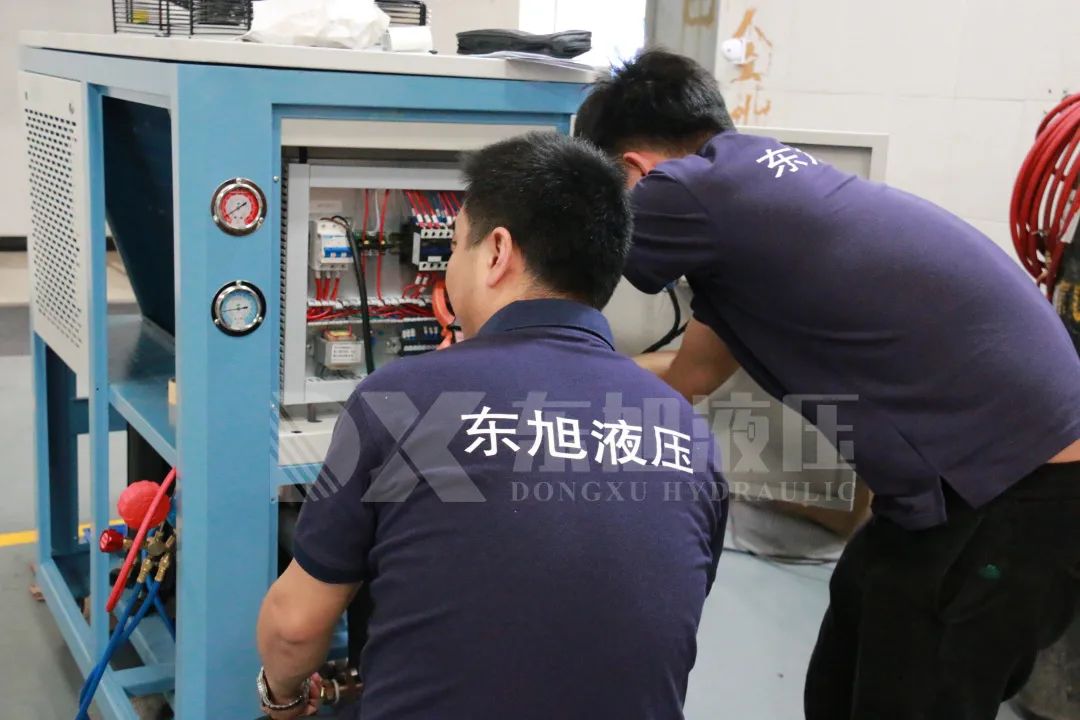
a. If it is used for cooling the main shaft, the cooling capacity of the required refrigeration unit can be estimated based on 30% of the power of the main shaft motor. For example: 15kw motor, 4.5kw or 5.8kw cooling capacity refrigeration unit is optional;
b. P heat=1.2×(p motor×n)×1.16
p Motor power (all motor power of the hydraulic station)
n Energy loss factor
|
Hydraulic System Working Voltage |
Energy Loss Coefficient |
|
10Mpa |
0.10~0.25 |
|
15Mpa |
0.35 |
|
20Mpa |
0.40~0.55 |
|
25~30Mpa |
0.60~0.75 |
|
30Mpa and above |
0.75~1.00 |
The above-calculated power selection is more than 20%-50%
Method 3:
Calculate the calorific value by the temperature rise of the oil tank:
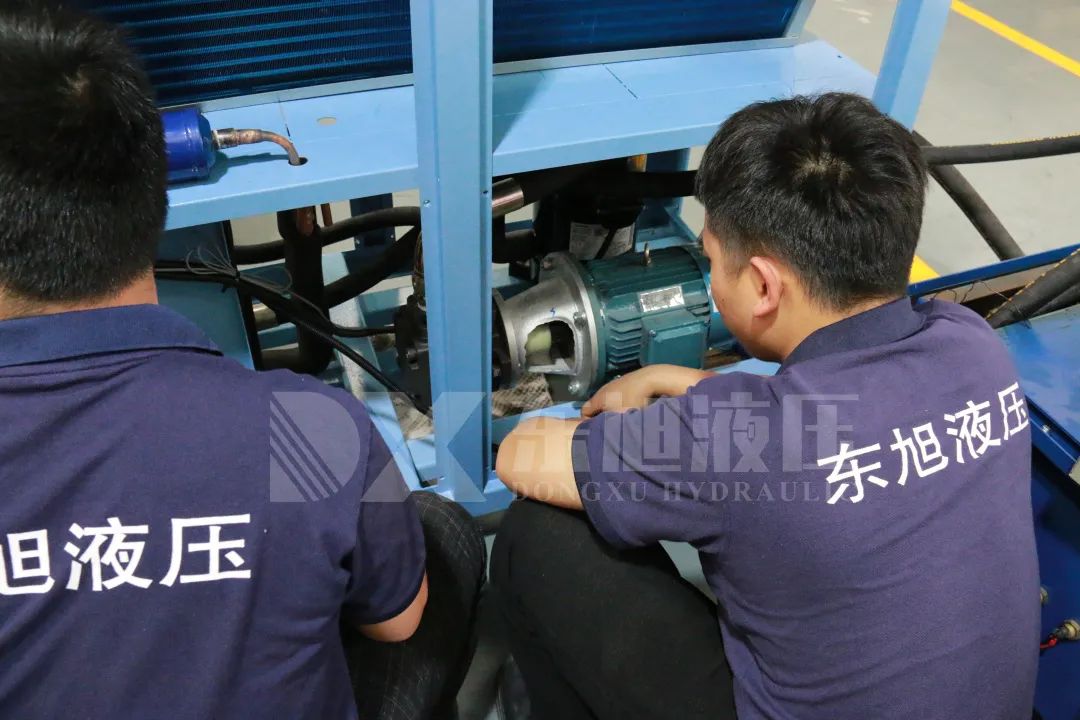
Q = SH × De × V × DT / 60
Q: Calorific value KW
SH: The specific heat of oil is 1.97KJ/Kg*C (1.97 kilojoules/kg*degree Celsius)
De: Specific gravity of oil 0.88Kg/L (0.88 kg/L)
V: oil/water capacity L (liters) includes the total water capacity in the oil tank and pipeline
DT: the maximum temperature rise in one minute
Note: “/ 60″ is used to change the temperature rise from Celsius/minute to Celsius/second; 1kW = 1kJ/s;
Note: When measuring, the temperature of the fuel tank should be slightly lower than the ambient temperature; and the equipment should work under the maximum load.
Example: 1 oil tank volume 3000L maximum water temperature or oil temperature 0.6 degrees per minute calorific value Q = 1.97 × 0.88 × 3000 × 0.6 / 60 = 52KW
Supplementary Note: When selecting the cooling capacity of the oil cooler, it can be selected by appropriately increasing the cooling capacity by 20%-50%;
1. The cooling capacity of the oil cooler varies with the ambient temperature and outlet water temperature;
2. The actual heating value of the equipment will also change due to different workpieces, molds, parameters, etc.;
3. After using the oil cooler, the temperature drops, and the surface temperature of connecting pipelines, water tanks, oil tanks, molds, spindles, and equipment will be lower than the ambient temperature, so heat will be absorbed and the load will increase;
4. In many cases in the actual application of industrial cooling, it is impossible to accurately use the above methods to calculate. At this time, it can only be estimated by empirical data and analogy of similar equipment.
5. There may be deviations in any calculation method, so that the actual selection of refrigeration units is too large or too small, so the above method is only for reference;
02 use operation
Machine Control Operation Panel Instructions:
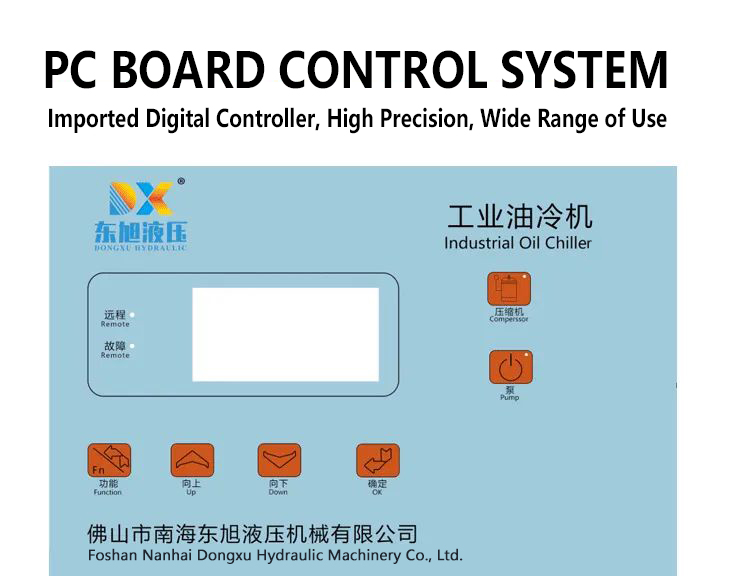
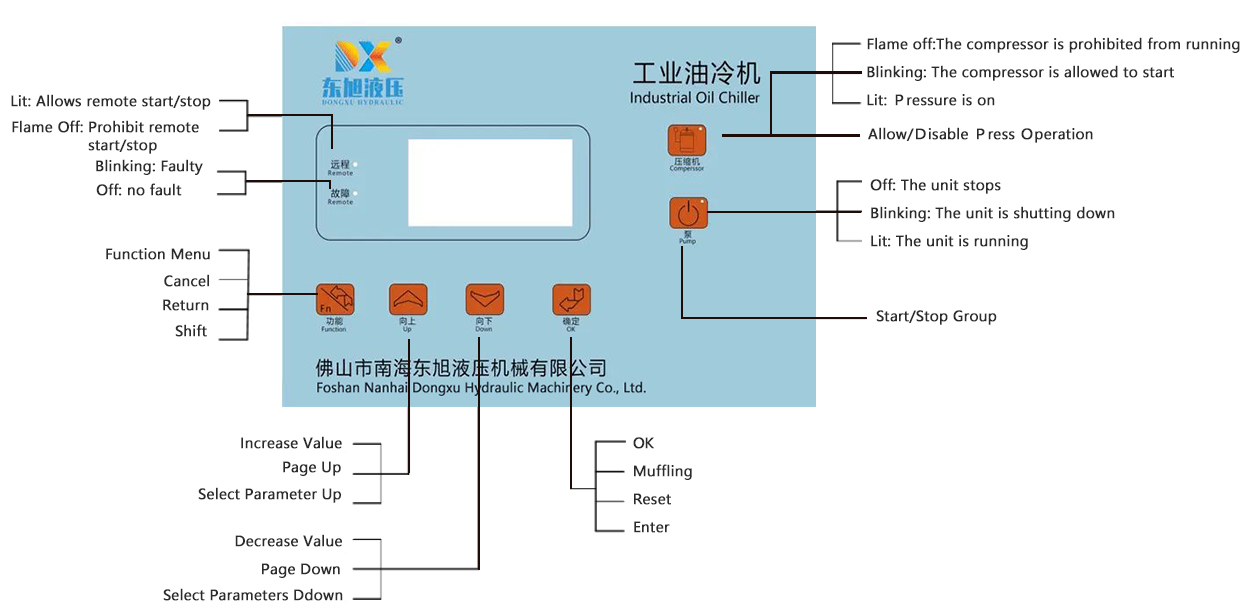
Home page:
After the countdown is over, it will enter the main interface, which is displayed as follows:
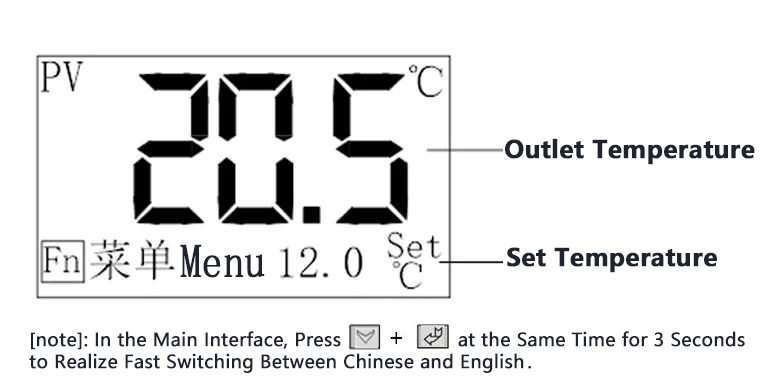
Alarm Page:
When the unit fails, the alarm prompt interface is as follows:
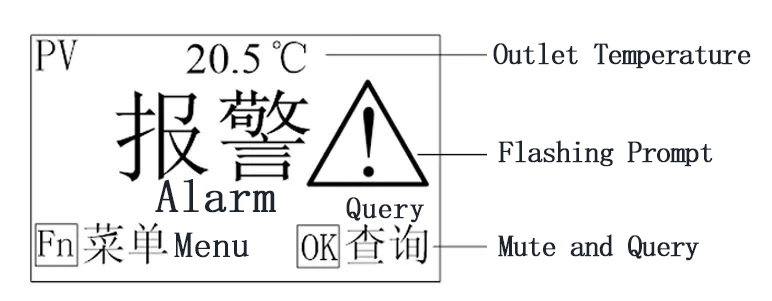
Quickly modify the set temperature:
If the user parameter [Lock Temperature] is set to “No”, the set temperature can be directly modified in the main interface, the operation is as follows:

Note: The set temperature can also be modified in the user parameters.
When a fault occurs, an alarm interface will pop up automatically. The fault query and reset operations are as follows:

03 Maintenance
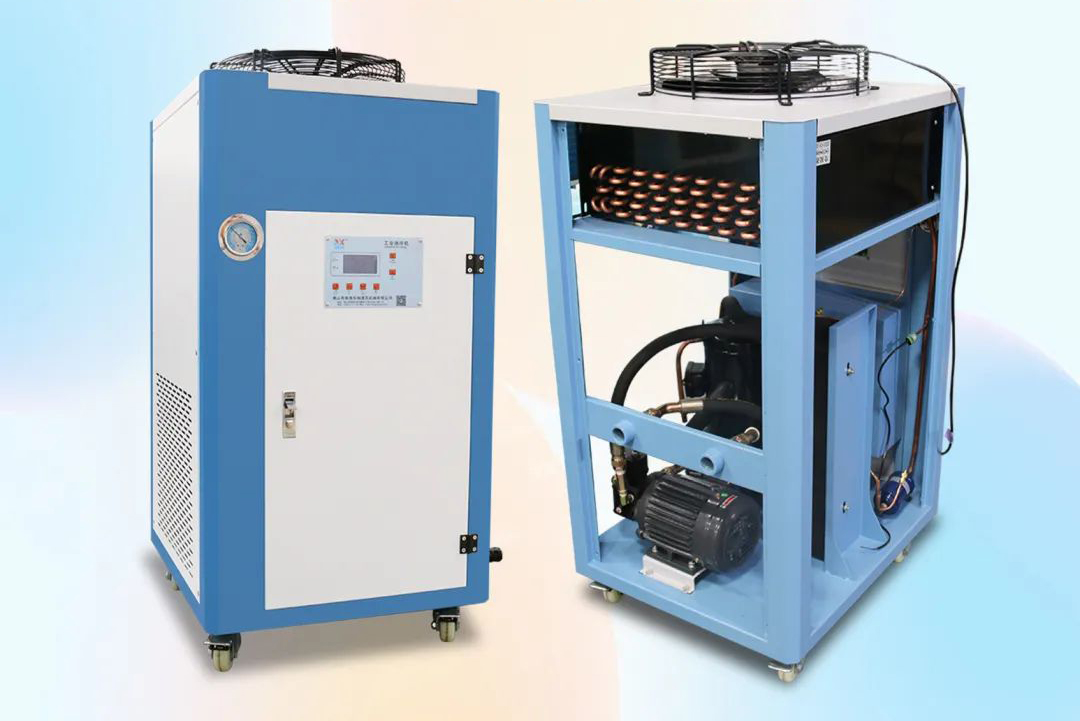
In order to maintain the operating efficiency of the oil cooling unit and prolong its service life, regular maintenance and maintenance work should be carried out. Any maintenance and maintenance must be carried out under the condition of power failure, and it should be 1-2 hours after the unit stops running.
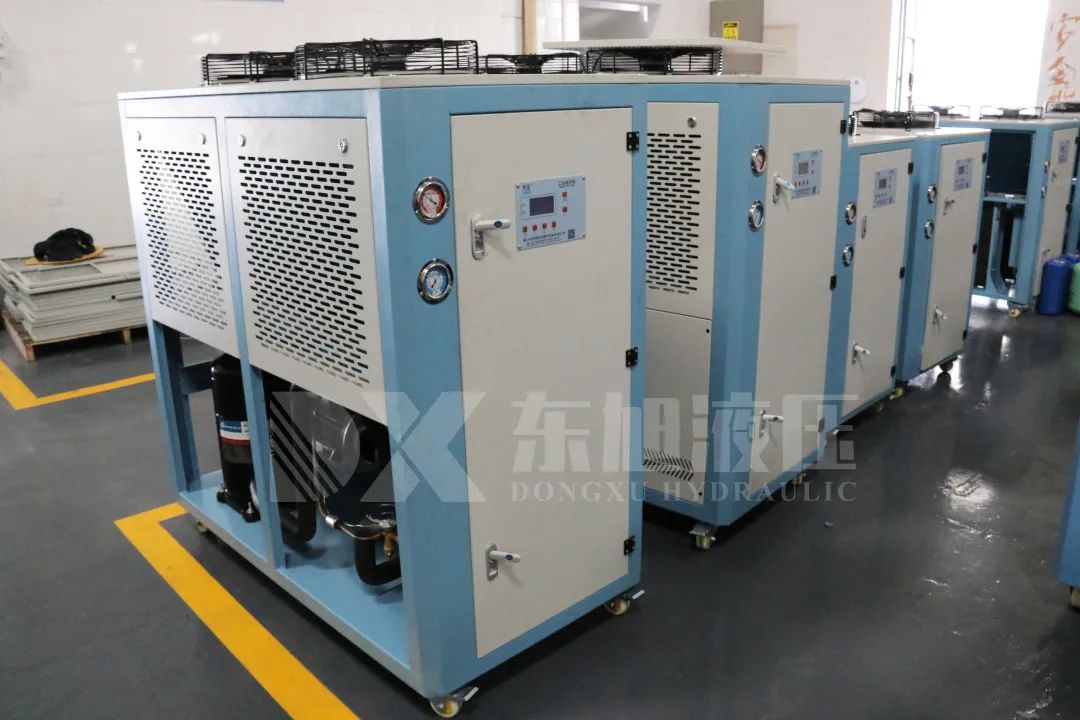
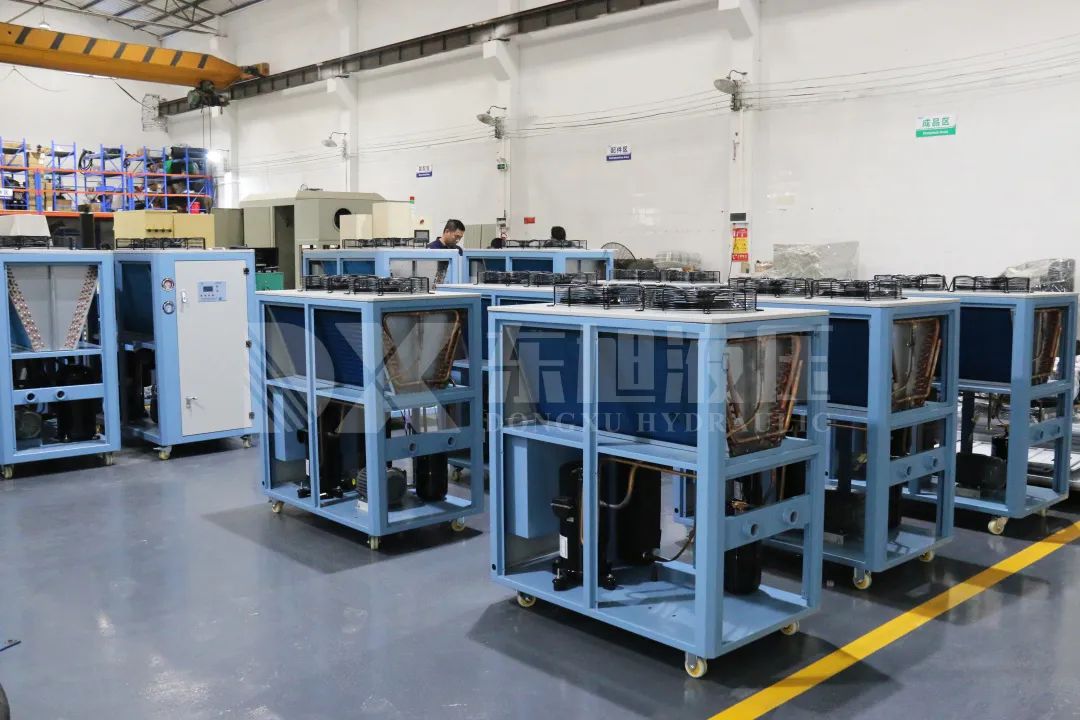
1. Turn on the oil cooler. From March to November every year, the operator is required to turn on the oil cooler in time to ensure the normal operation of the equipment, and it is stipulated that the oil cooler should be turned on when the equipment starts every shift.
2. Observation of the oil cooler. The oil cooler is set to a certain cooling temperature value. When operating the equipment, the operator needs to pay attention to the displayed value of the oil temperature. When the oil temperature is higher than the set value for a long time, it is necessary to report the situation to maintenance in time.
3. Clean up the oil tank. The oil cooler runs for about 3-5 months, and the oil in the oil tank is filtered. Also clean the bottom of the fuel tank completely. In order to prevent the oil from being too dirty to block the oil suction port of the oil cooler, the cooling efficiency is poor, no oil enters the oil pump of the oil cooler, damages the oil pump of the oil cooler, and freezes the evaporator of the oil cooler.
4. Clean the air filter. Clean the air filter every two weeks (or at least once a week in harsh environments). When cleaning, remove the filter first, and remove the dust with a vacuum cleaner or air spray gun. When the dirt is serious, use warm water and neutral detergent with a temperature not exceeding 40°C to clean the air filter. After cleaning, it should be air-dried, and then put it back to the original place.
5. Check regularly. According to the cleanliness of the oil, regularly check and clean the oil suction filter or replace the filter to prevent dirt from clogging.
6. Clean the unit surface. When the surface of the unit is dirty, use neutral detergent or high-quality soapy water to wipe it with a soft cloth. Be careful not to use petroleum, acid solvents, abrasive powder, steel brushes and sandpaper, etc., to prevent damage to the sprayed surface.
7. Inspect before re-use. After long-term re-use or use for a long period of time, check whether the heat exchanger of the oil cooler is blocked by dust and dirt. The surface should be cleaned with dry compressed air, a vacuum cleaner or a soft brush if necessary. Be careful not to damage the heat exchanger fins while doing this work.
Foshan Nanhai Dongxu Hydraulic Machinery Co., Ltd.
MAIL: Jaemo@fsdxyy.com
WEB: www.dxhydraulics.com
WHATSAPP/SKYPE/TEL/WECHAT: +86 139-2992-3909
ADD: Factory Building 5, Area C3, Xingguangyuan Industry Base, Yanjiang South Road, Luocun Street, Nanhai District, Foshan City, Guangdong Province, China 528226
Post time: Feb-20-2023
